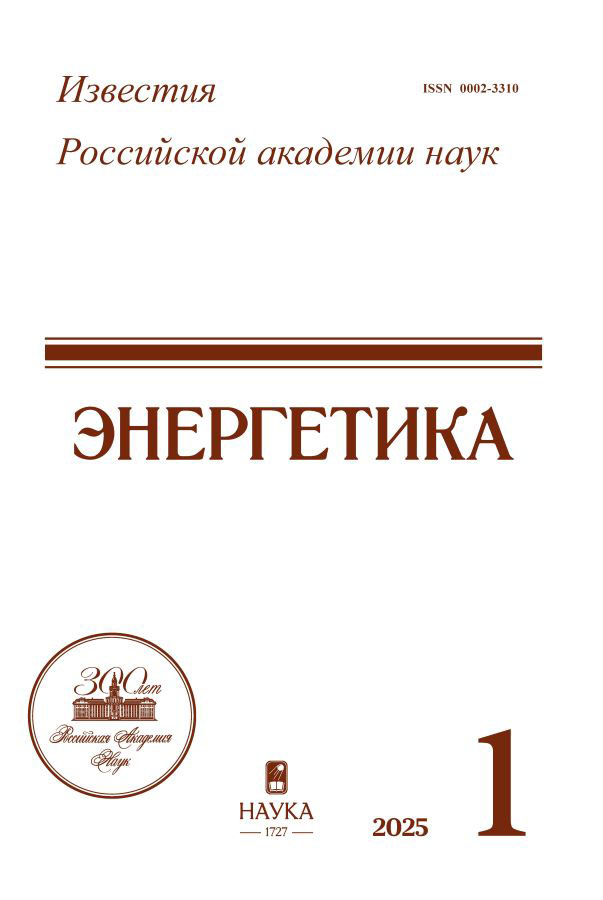Integral model for the long-lived radioactive waste disposal using the “self-immersion” method
- Авторлар: Korchagina O.O.1, Matveev L.V.1
-
Мекемелер:
- Nuclear Safety Institute of the Russian academy of sciences
- Шығарылым: № 1 (2025)
- Беттер: 48-60
- Бөлім: Articles
- URL: https://ter-arkhiv.ru/0002-3310/article/view/678653
- DOI: https://doi.org/10.31857/S0002331025010049
- ID: 678653
Дәйексөз келтіру
Аннотация
The presented integral model of radioactive waste disposal using the method of heat-generating capsule self-immersing into geologic rocks includes three stages: the stage of heating and the beginning of melting of the rock surrounding motionless capsule, the stage of quasi-stationary movement of the capsule, and the stage of the capsule deceleration. It is shown that as a result of capsule immersion into the melting rock the focusing of heat flow takes place, so that the capsule moving continues even at the heat rates significantly less than the critical value required for the start of melting. A possible radioactive waste composition and the immersion depth depending on burial environment were analyzed.
Негізгі сөздер
Толық мәтін
Авторлар туралы
O. Korchagina
Nuclear Safety Institute of the Russian academy of sciences
Email: matweev@ibrae.ac.ru
Ресей, Moscow
L. Matveev
Nuclear Safety Institute of the Russian academy of sciences
Хат алмасуға жауапты Автор.
Email: matweev@ibrae.ac.ru
Ресей, Moscow
Әдебиет тізімі
- Logan S.E. Deep self-burial of radioactive wastes by rock-melting capsules. Nuclear Technology, 1974. V. 21, P. 111.
- Кащеев В.А., Никифоров А.С., Полуэктов П.П., Поляков А.С. К теории самозахоронения высокоактивных отходов / Атомная Энергия, 1992. Т. 73. Вып. 3. С. 215.
- Никифоров А.С., Поляков А.С., Полуэктов П.П. Способ захоронения радиоактивных отходов / Патент SU 826875 А1, G21F 9/24 (1980).
- Арутюнян Р.В., Большов Л.А., Кондратенко П.С., Матвеев Л.В. Способ захоронения радиоактивных отходов и тепловыделяющая капсула для его осуществления / Патент RU 2510540 C1, G21F 9/28 (2012).
- Аветисян А.Р., Арутюнян Р.В., Большов Л.А., Кондратенко П.С., Матвеев Л.В. Математическая модель управления процессом изоляции радиоактивных отходов методом самопогружения в геологических массивах. Атомная энергия, 2020. Т. 129. № 5. С. 277.
- Арутюнян Р.В., Большов Л.А., Шведов А.М. Самозахоронение радиоактивных отходов в геологических формациях за счет прямого нагрева пород у-излучением. Атомная энергия, 2017, Т. 123. № 2. C. 88.
- Logan S.E. Deeper geologic disposal: a new look at self-burial. Proc. WM’99 Conference, February 28 - March 4, Tucson, AZ, P. 10–51, 1999.
- Byalko A.V. Nuclear Waste Disposal: Geophysical Safety. USA, CRC press, 1994.
- Emerman S.H. and Turcotte D.L. Stokes’s problem with melting. Int. J. Heat Mass Transfer, 1983. V. 26. № 11. P. 1625.
- Chen W., Bo Z., Chen Zh., Li H., and Sun F. New Analysis of contact melting of phase change material around a hot sphere. Heat Mass Transfer, 2008. V. 44. P. 281.
- Косачевский Л.Я., Сюи Л.С. К вопросу о “самозахоронении” радиоактивных отходов. Журнал технической физики, 1999. Т. 69. № 11. С. 123.
- Докутович В.Н., Филатов Е.С., Хохлов В.А., Минченко В.И. Теплопроводность расплавов NdCl3 – MCl (M = Na, K, Cs), Расплавы, 2010. № 2, стр. 7.
- Корчагина О.О., Аветисян А.Р. Анализ процесса “самопогружения” тепловыделяющего шара под действием силы тяжести / Изв. РАН. Энергетика, 2019. № 2, С. 43.
Қосымша файлдар










